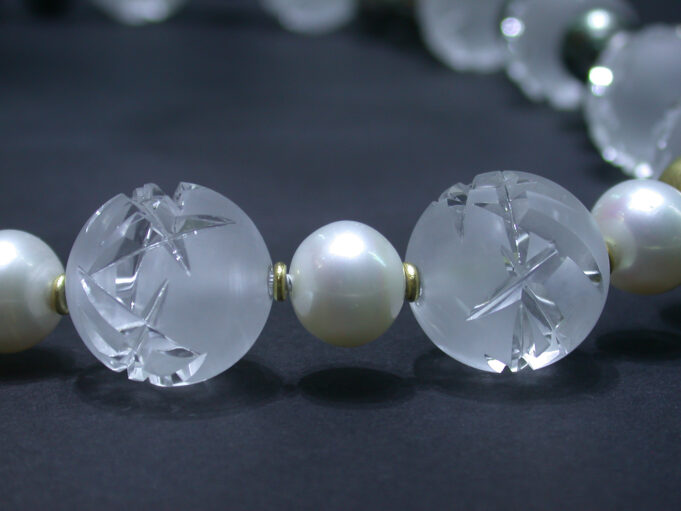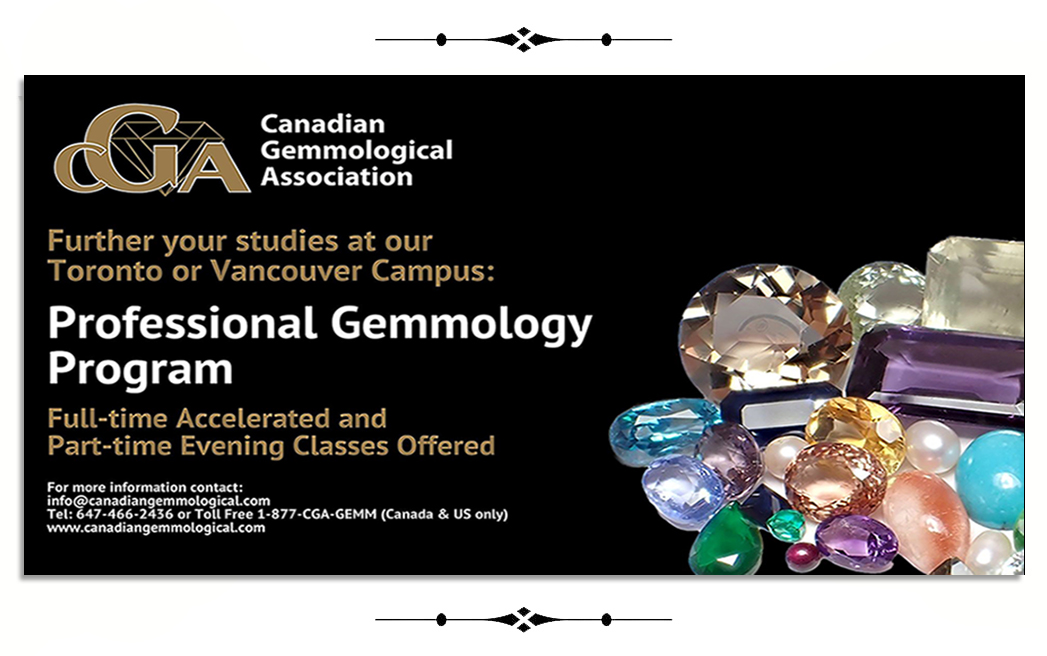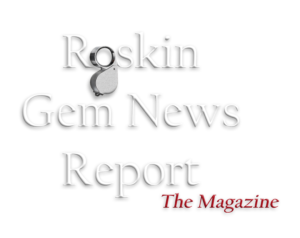Images from Tucson
One of the many Tucson highlights would be the vast variety of gem materials brought for sale and display. Of course you will see all of the more retail traditional gems, including the “big three” (emerald, ruby, sapphire) along with all of the other birthstones. But what we try to focus on are some of the more unique gem materials.
So without further ado, let’s take a look.
Rhodochrosite
Argentinian Rhodochrosite – a Manganese Carbonate MnCO3, Stalactites of “Inca Rose”
In its typical ornamental semi-translucent to opaque form, its reddish-pink (rose) color is often blended with white stripes, being compared to the appearance of bacon. In its pure form, it can be transparent, with a solid orangey-pinkish-red hue. In this case here, however, what we have encountered is a slice of a double stalactite, a mineral formation that hangs from the ceiling of caves. The Incas, who called it Inca Rose, believed that Rhodochrosite was the blood of their former kings and queens that were then turned into stone.
Hmmm, is that a selling point?
Not Your Birthstone – Rhodochrosite
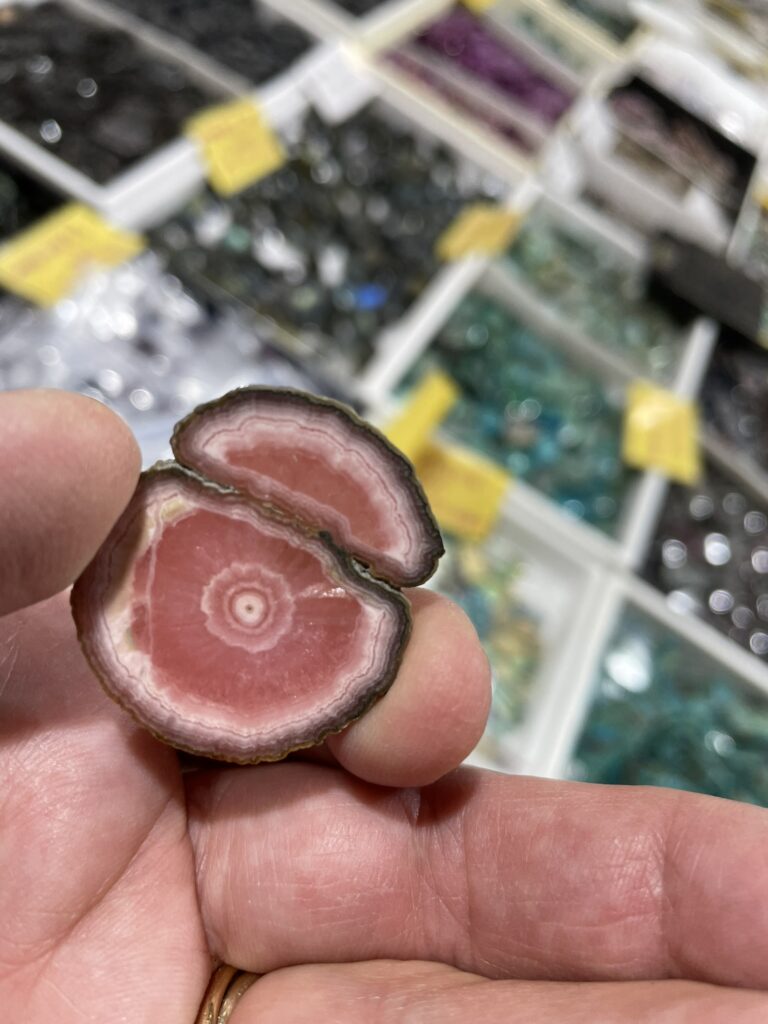
Image by Gary Roskin
A Non-Traditional Look, but popular!
Matte Finish
Do you love the color of the gem, but not the transparency or clarity? Maybe this is the answer!
Typically, you can polish “eye clean” gems into traditional cuts and shapes. Or, you can carve or cab (cut “en cabochon”) gem materials to obscure the unsightly inclusions. You can slice and bright polish thin wafers of what in the past would have been considered “non-gem quality” material, to feature natural growth markings. Or you can take any of these quality materials and try something new, where color, shape, and texture are highlighted – give them a matte finish!
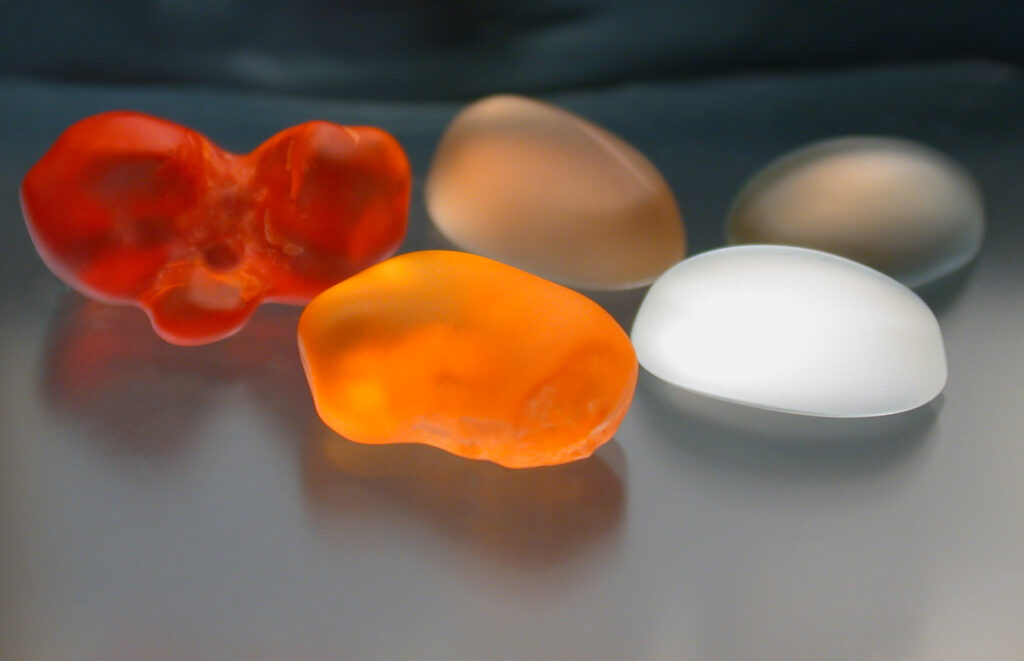
Image by Gary Roskin
Labradorite
These are WAY too big (and heavy) to set! (see image below)
There are smaller wearable labradorites – but not here. These ornamental objects of labradorite display broad flashes of color, called labradorescence. This flash of broad colors is caused from differing layers of crystal growth, acting as a diffraction grating. This phenomenon is seen with the typical Madagascan material pictured here.
Want to make this complicated? Oregon labradorite feldspar, called Sunstone, has an optical phenomenon called schiller (not labradorescence), where copper platelet inclusions line up and reflect light in broad shiny flashes. Yes, sunstone is a labradorite – even though it does not look like the Madagascan material. And with feldspar being a group of species with numerous varieties, feldspars can be a complicated topic for even the seasoned mineralogist and gemologist.
The real question with these labradorites is this… Do I carry it on the plane, pack it really well in my checked bag and risk being over the baggage weight limit, or ship it back, paying more for the shipping than I did for the stone? Hmmm …
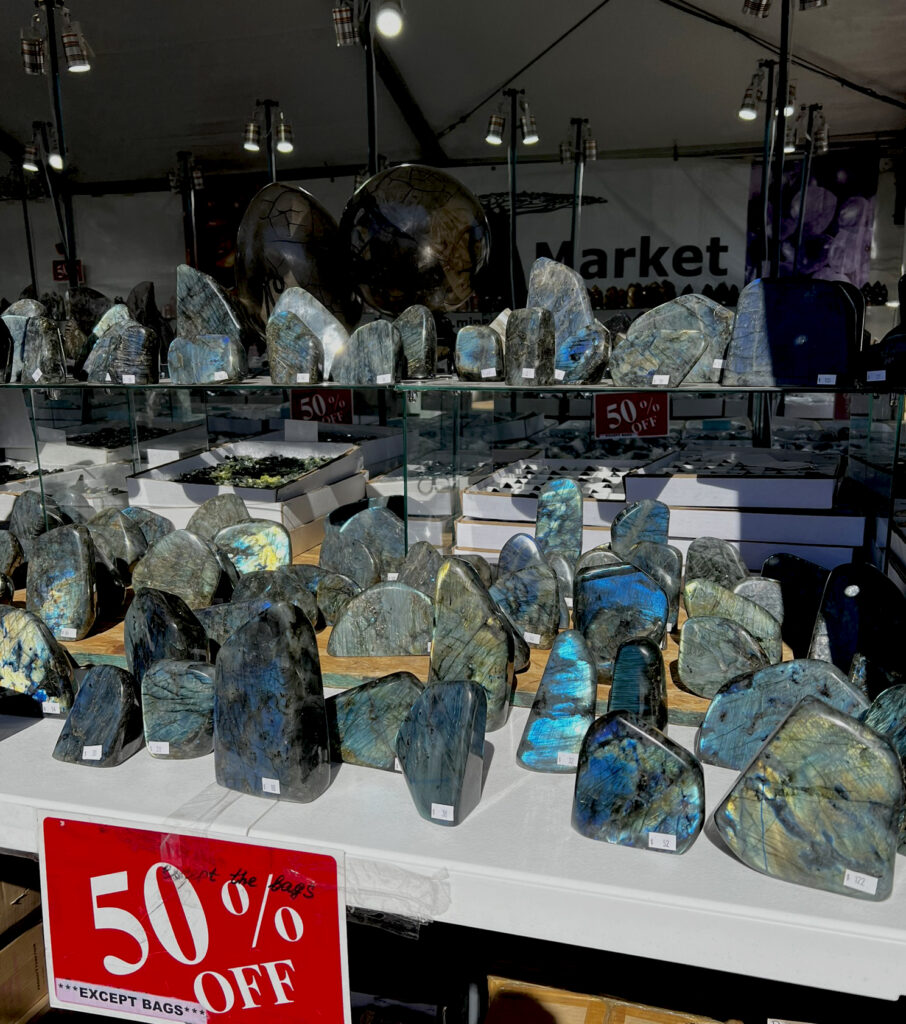
Located in the mineral market of the Pueblo Gem & Mineral Show at the Ramada by Windham.
Image by Gary Roskin
Moldavite
Natural Glass! Originating from the impact of a meteorite some 15 million years ago, melting silica-rich rock upon impact, (possibly a sandstone, siltstone or shale), and then projecting it into the Czech Republic as it becomes a natural glass. This is how a tektite is formed.
You can find the Ries impact crater in “Bavaria” (southern Germany). To find the tektites, the natural glass, you need to find the strewn field. Turns out, much of the strewn field for moldavite is found some 150+ miles from the crater, in the Czech Republic, in Bohemia, near the Vltava River. In the Czech Republic, this natural glass is called “Vltavin.” In the German language, the Vltava River is known as the Moldau. For those of us who refer to this natural glass as Moldavite, this is why.
You don’t see this natural glass every day in your local jewelry shop (unless you are in Bavaria or in the Czech Republic) … and maybe that’s because 1. it’s glass, and 2. it’s dark olive in color.
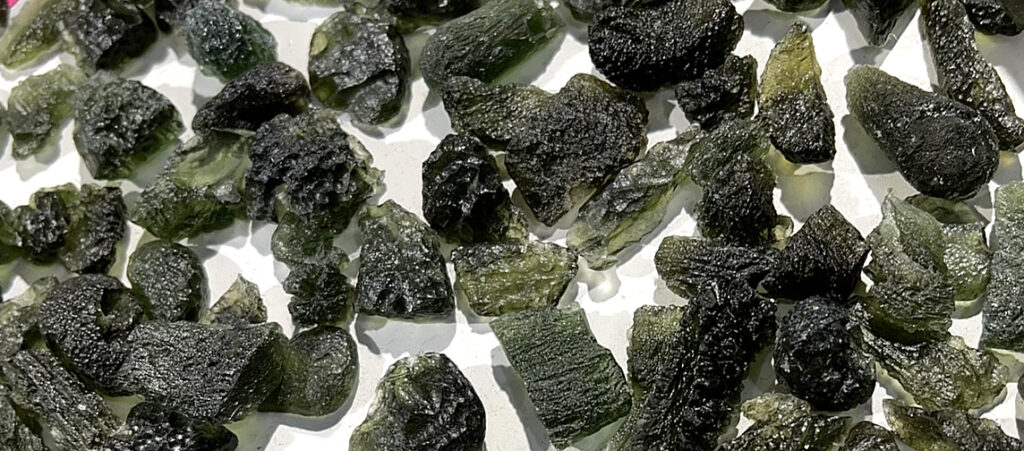
Image by Gary Roskin
Sugilite
Who doesn’t like Deep Ornamental Purple?
According to MinDat.org, “Sugilite is named after Japanese petrologist Dr. Kenichi Sugi, whose name is pronounced with a hard ‘g’ (as in ‘geese’), whereas most English speakers mispronounce the gem using a soft ‘g’ (as in ‘gene’). Guilty! – gr
Found in the Republic of South Africa, much of the material is opaque, and is often used as inlay. The purple color is outstanding, but the material itself is only average with regard to durability and wearability. … But the color …..
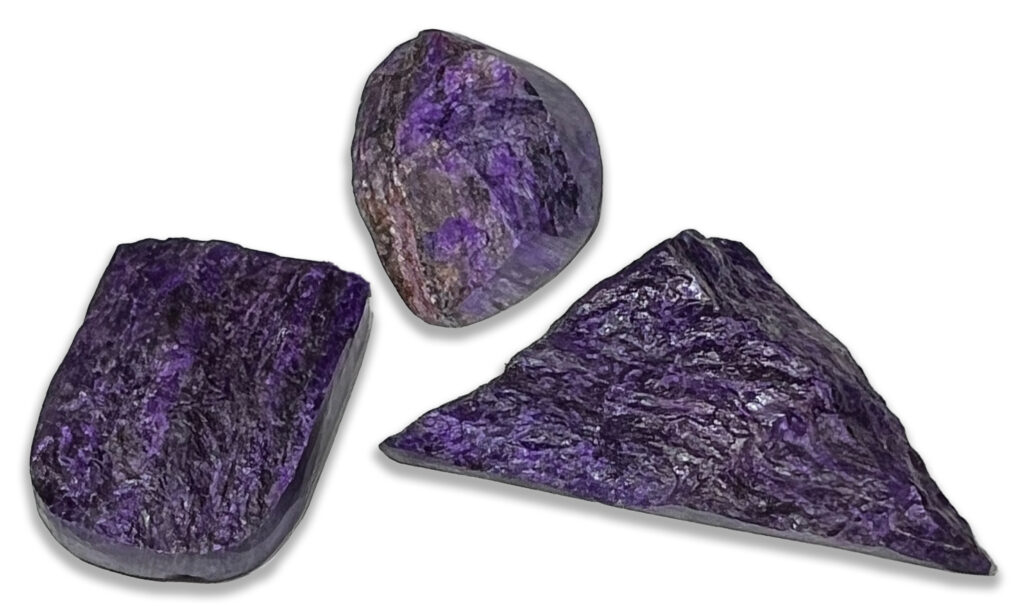
Image by Gary Roskin
Big, Bold, and Beautiful
An outstanding suite of large, clean, and beautifully cut gems, from Constantin Wild, Idar-Oberstein.
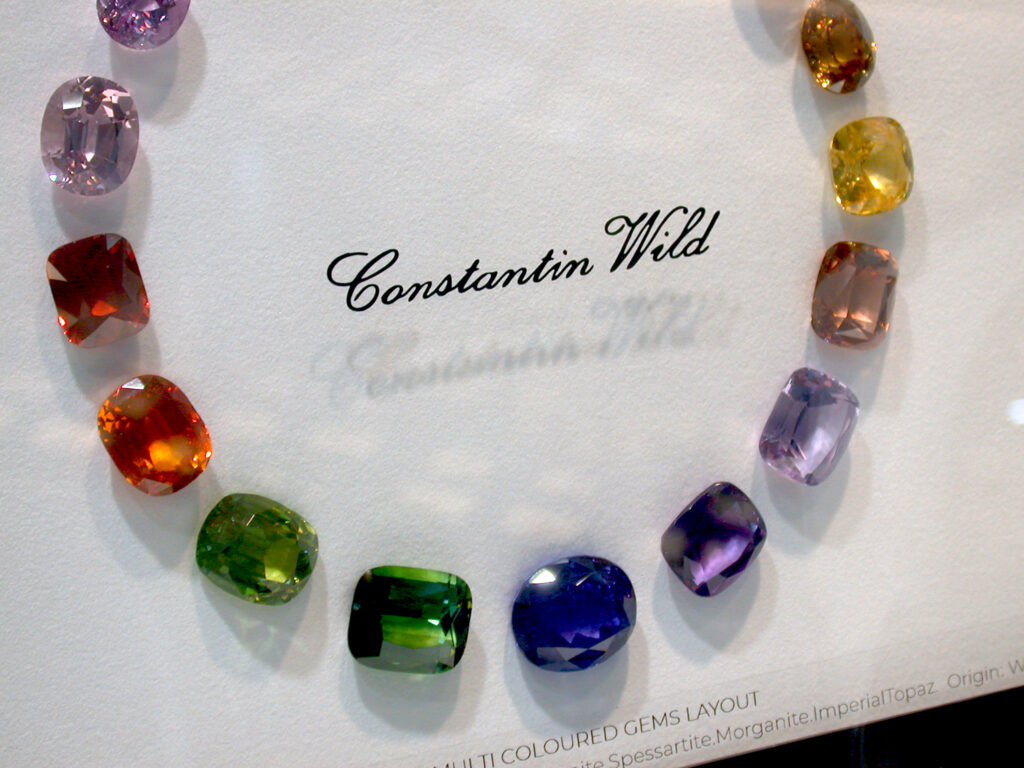
331.13 carats: Zircon, Sapphire, Tourmaline, Amethyst, Tanzanite, Spessartite Morganite, Imperial Topaz.
Image by Gary Roskin
Colombian Sapphire
Sapphire from Colombia? – Yes.
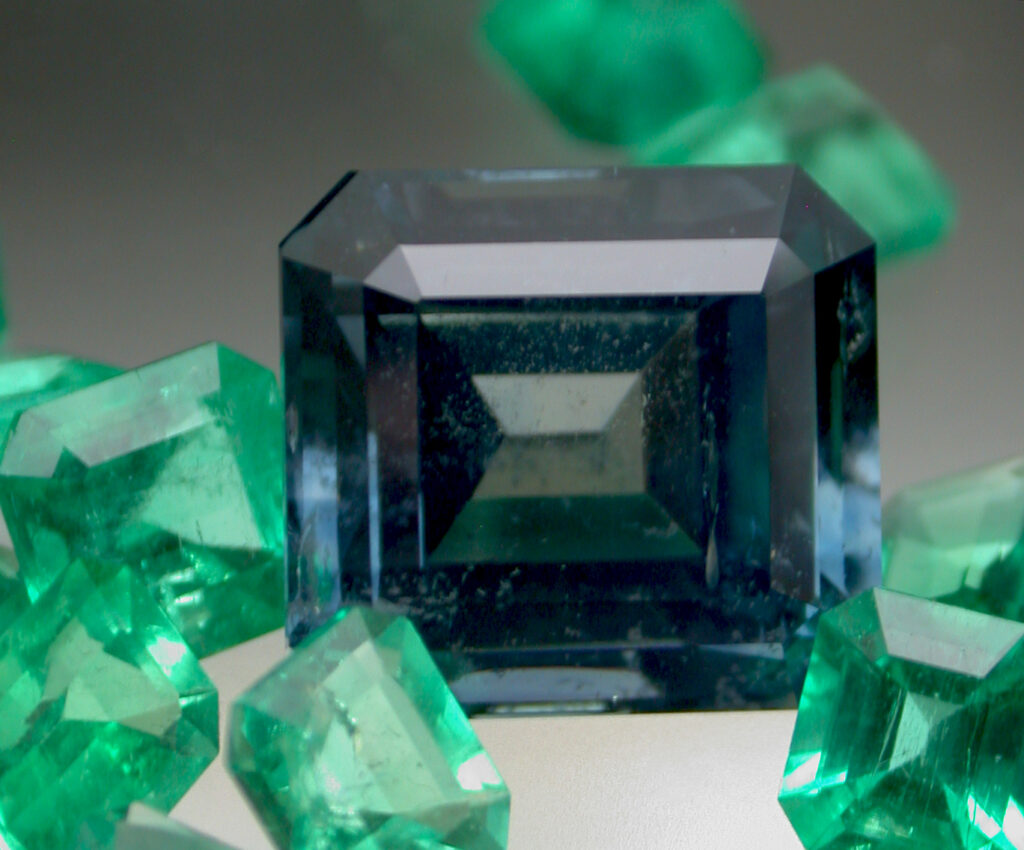
Munsteiner Rock Crystal and Pearls Necklace
Wearable Art
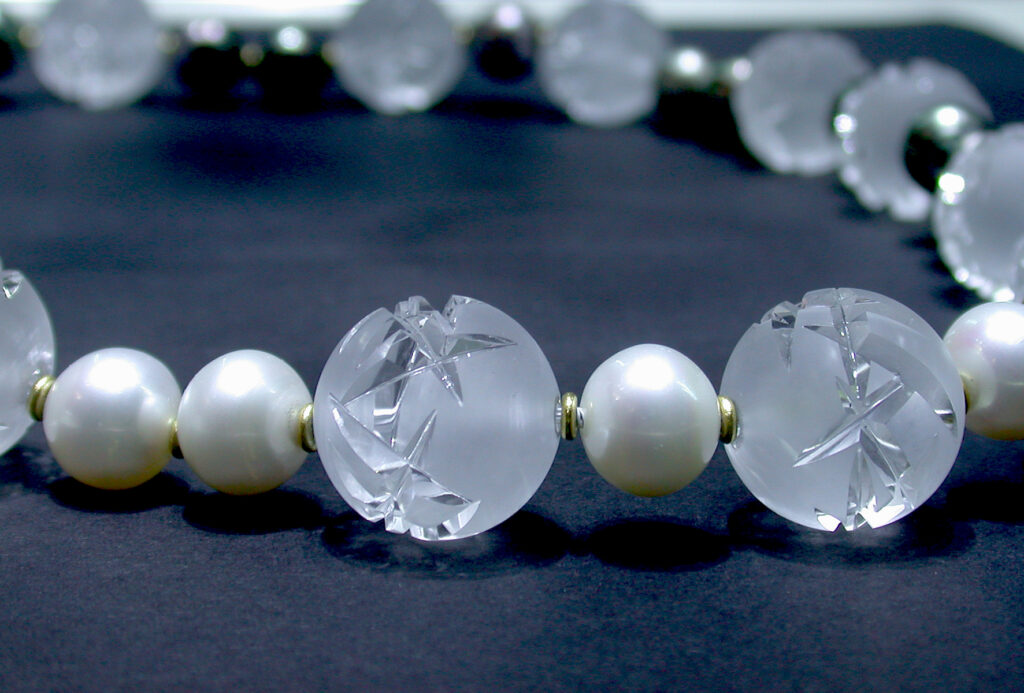
16 20mm Rock Crystal carved spheres, freshwater
and Tahitian cultured pearls, 18K yellow gold
(GJX Idar-Oberstein Group)
Image by Gary Roskin
Turquoise
Turquoise can be one fantastic homogeneous color, or variations of turquoise with matrix.
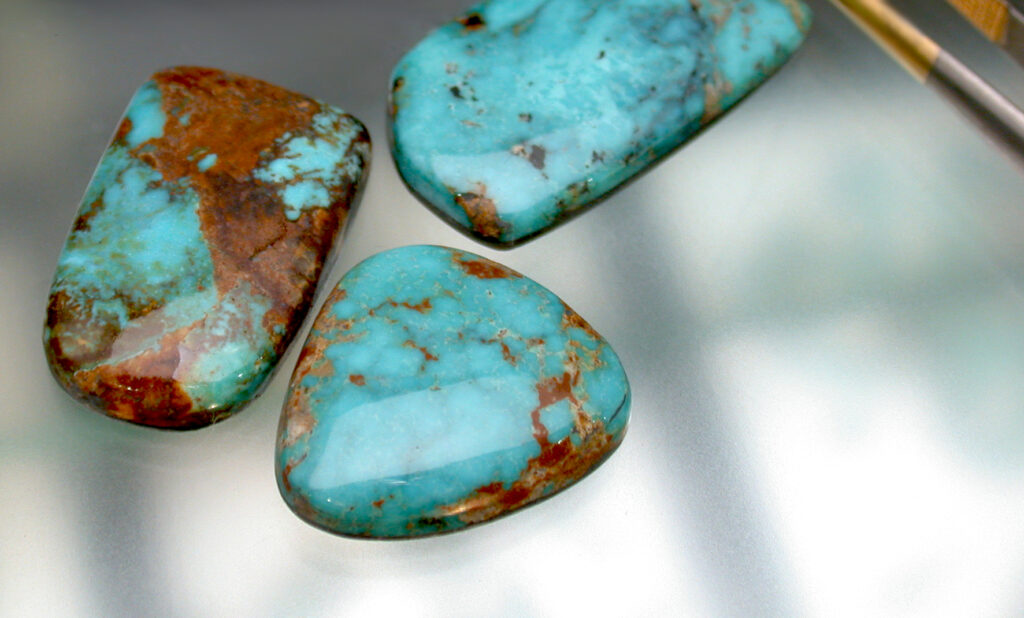
U.S. Turquoise – Out of our Mines (AGTA GemFair)
Southern California Tourmaline – New Find, the King Mine
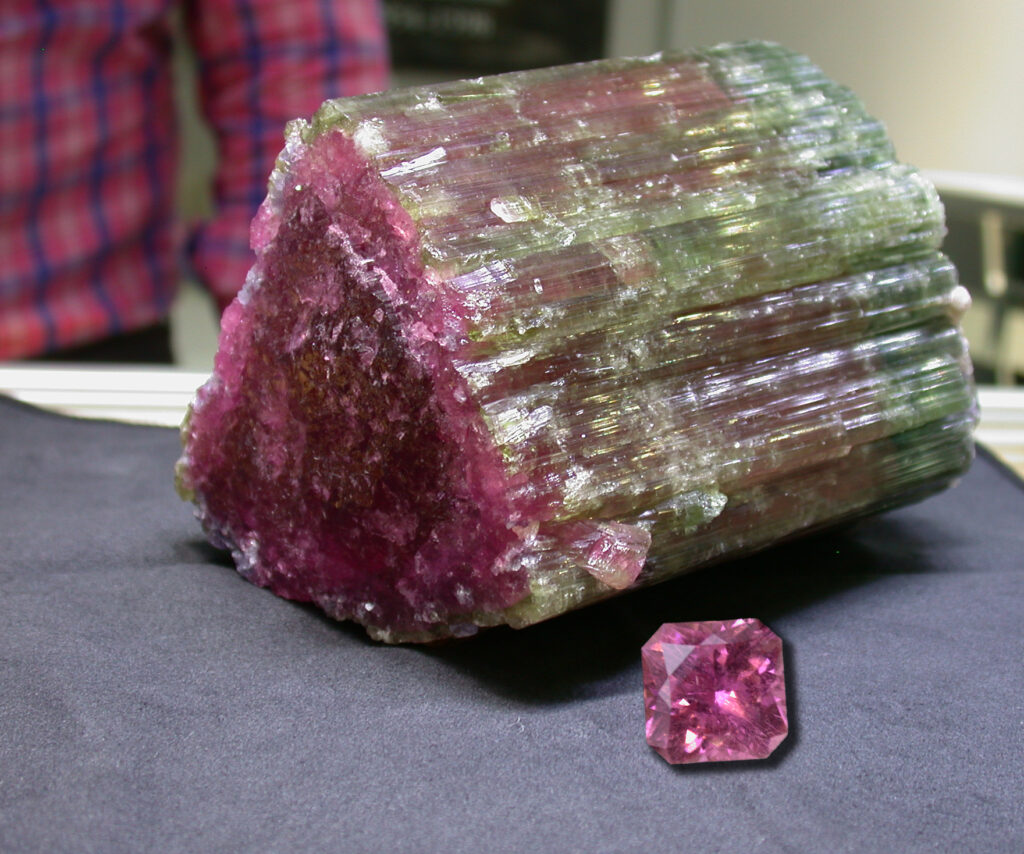
Images by Gary Roskin
Watermelon Tourmaline Slices with Purple Lepidolite Crystals
One tourmaline crystal, sliced …
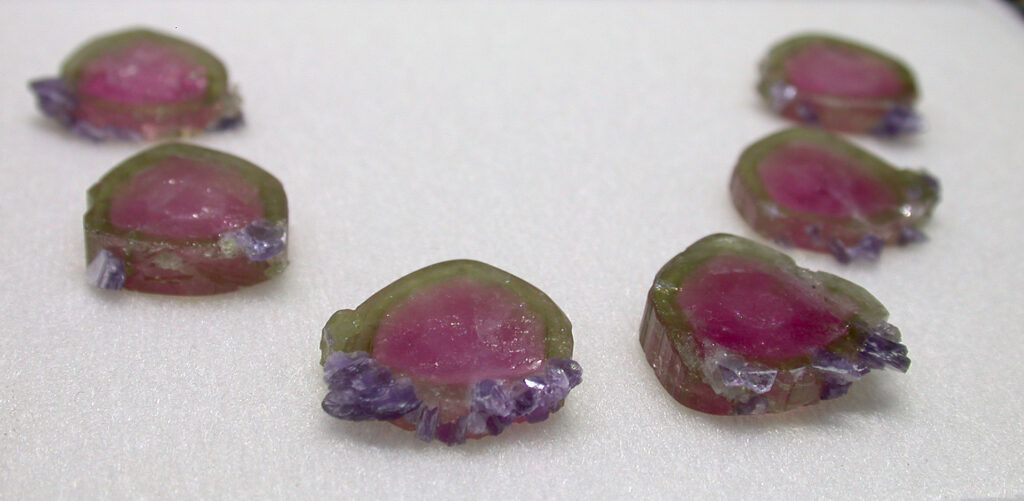
Images by Gary Roskin
Malachite & Turquoise – Rare Earth Mining (AGTA GemFair)
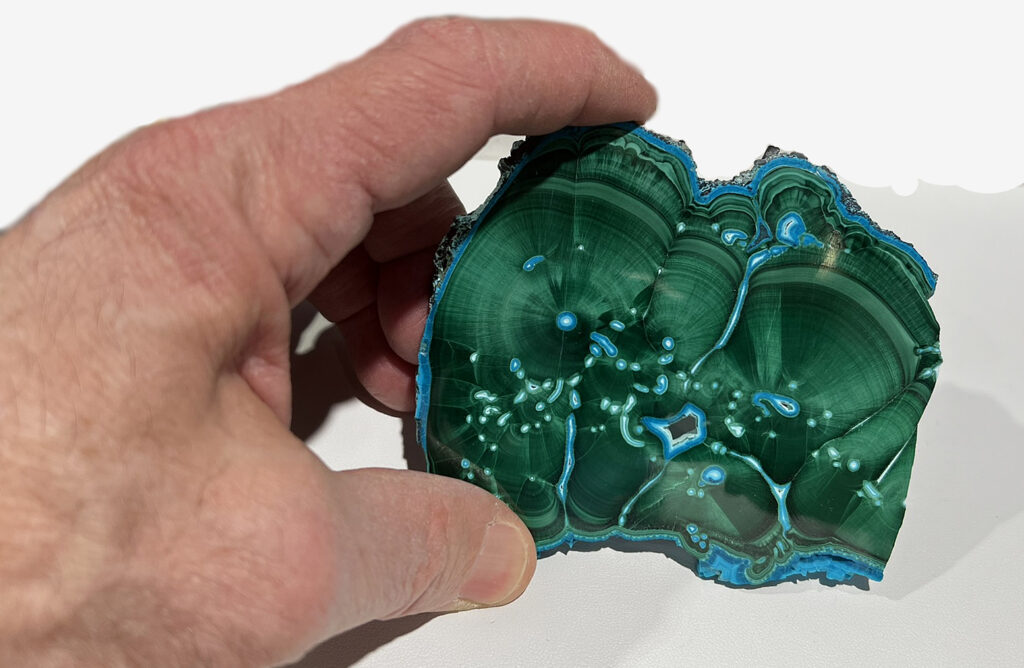
Image by Gary Roskin
Transparent Rhodonite
Rhodonite is more commonly found as an ornamental gem material. So seeing transparent gem rhodonite is quite unique and rare – outside of Tucson.
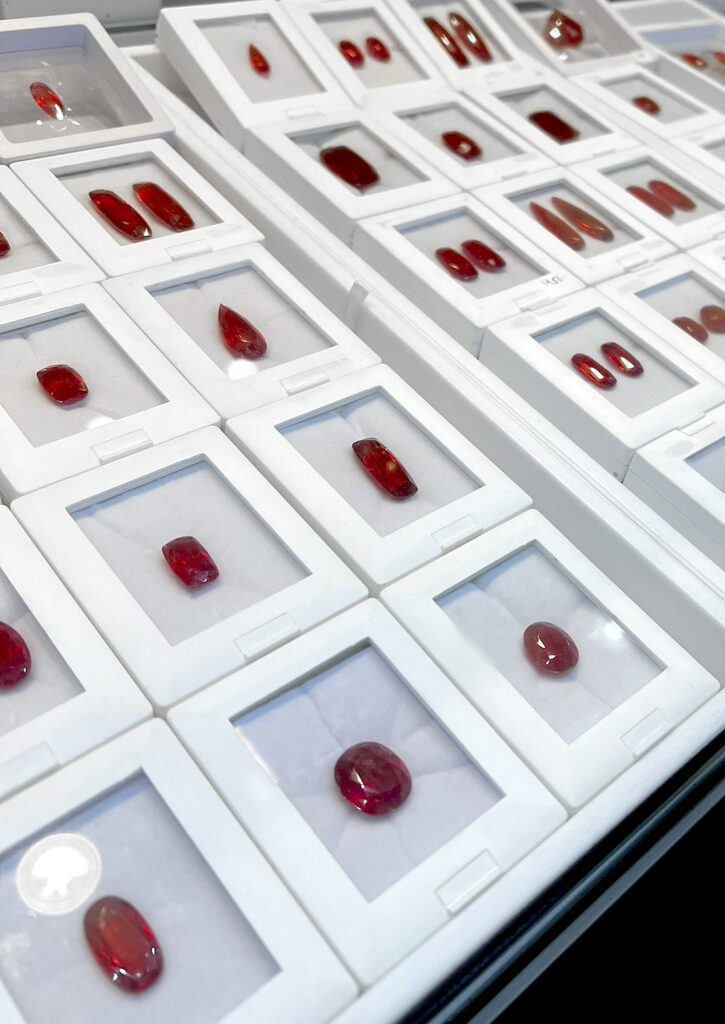
Image by Gary Roskin
Last but not Least
Yogo Montana Sapphire on display at the Tucson Gem & Mineral Show TGMS)
An Amazing collection of jewels set with Yogo sapphires, several loose gems, along with a rough sample in matrix. The central brooch with Yogo sapphires all around, is set with a Maine topaz!
The book, Yogo, the Great American Sapphire, by Stephen M. Voynick, is considered the standard reference for the material.
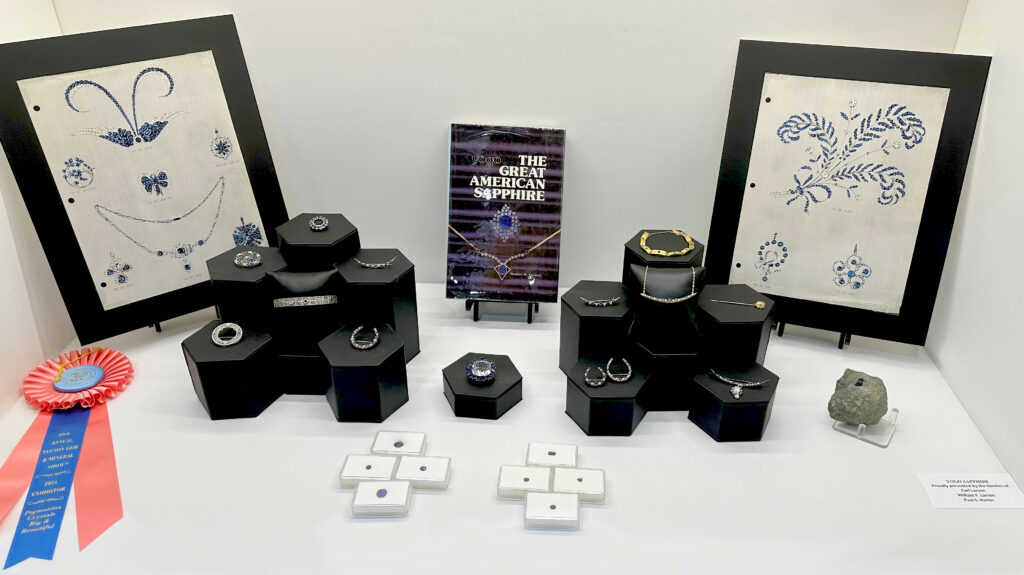
Display presented by the families of Carl Larson, William F. Larson, and Paul S. Harter.
Image provided by Carl Larson.
Stay tuned – we will have more for you next week!



